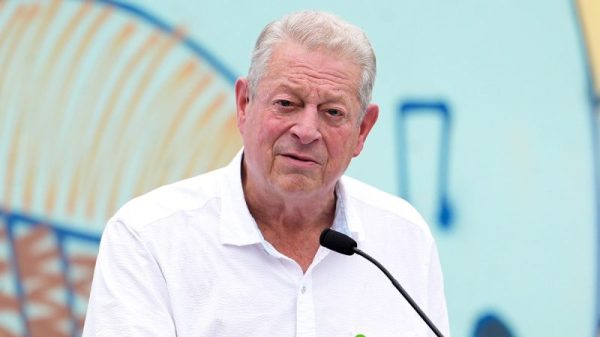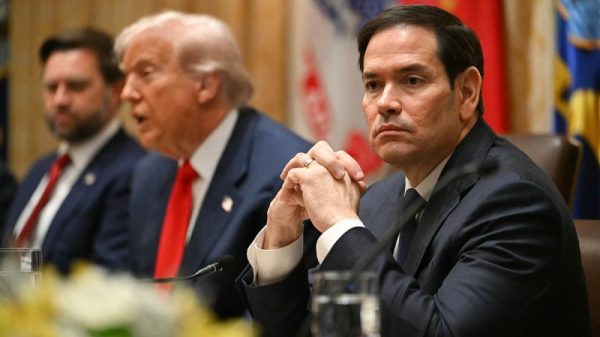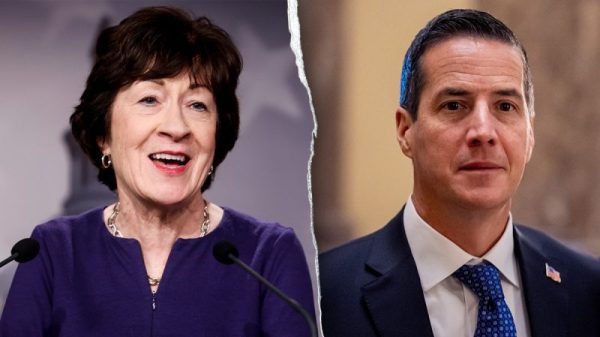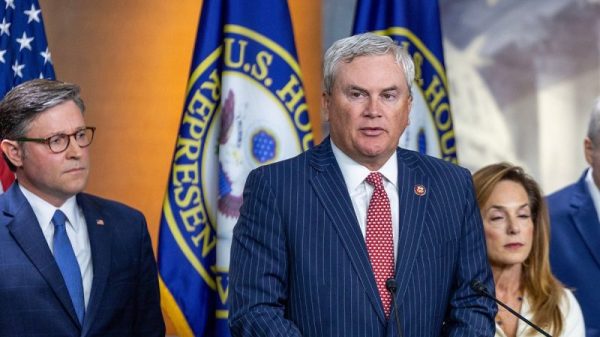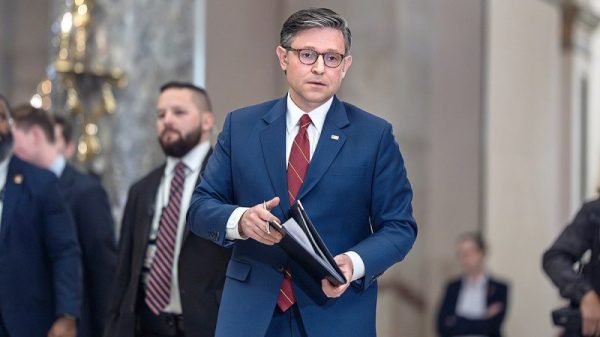The question of whether states can disqualify Donald Trump for having “engaged in insurrection” wasn’t particularly difficult for the Supreme Court — as expected. The court ruled unanimously Monday that states can’t enforce that clause of the 14th Amendment against federal and presidential candidates, in part because allowing them to do so would be chaotic.
But then five justices decided to make the broader decision difficult indeed. They did so in a way that the court’s left flank seemed to regard with more than raised eyebrows.
If the court wanted to present a united front now that it is deciding some crucial and contentious Trump-related issues, it failed. And now the situation practically screams: What is going on behind closed doors at the court?
One section in particular stands out from Monday’s decision in Trump v. Anderson.
“Even though ‘[a]ll nine Members of the Court’ agree that this independent and sufficient rationale resolves this case,” Justices Sonia Sotomayor, Elena Kagan and Ketanji Brown Jackson wrote in their concurrence, “five Justices go on.”
And then the key part: “They decide novel constitutional questions to insulate this Court and petitioner from future controversy.”
Just to underscore, the “petitioner” is Trump. The liberal justices were saying their colleagues went on to decide “novel” issues “to insulate” Trump.
You can parse that all day. But it sure sounds as if they’re saying that insulating Trump was, at least in part, the purpose of the court’s going beyond the basic question.
To recap the decision: The five majority justices ruled not just that states — Colorado, in this case — can’t disqualify Trump, but that the insurrection clause of the 14th Amendment can’t be enforced against a federal candidate without Congress laying out a process. It raised the bar significantly for Trump or anyone else ever being disqualified, particularly given how gridlocked Congress is.
Justice Amy Coney Barrett wrote that the court needn’t have decided such larger issues, which weren’t before the court.
But while Barrett tried to downplay her disagreement and emphasize the overall unanimous decision, Sotomayor, Kagan and Jackson went in a different direction. It seems their concurrence was at one point labeled a partial dissent, and that makes all kinds of sense when you look at its content.
It’s one thing to say that the opinion has the effect of insulating Trump; it’s another to say that it was done “to insulate” him.
Justices, of all people, choose their words carefully. And some experts regard this choice as conspicuous, suggesting the three liberal justices were flagging a perceived political motivation.
“It is an unusually frank statement, calling the majority politically motivated and seeking to protect one individual,” said Tonja Jacobi, a Supreme Court scholar at Emory University Law School. She added: “Usually they say something like that in more coded terms.”
Lawrence Baum, a scholar at Ohio State University who has written books about how justices operate, noted that the three justices simply could have criticized the court for insulating itself and not invoked Trump.
“It’s reasonable to think that the justices in the majority didn’t want to have to deal with potential disqualification in any subsequent case, especially a case coming close to (or after) the November election,” Baum said. “Their opinion serves that purpose very well.
“But the dissenters could have left it at that, so their ‘and petitioner’ is significant. That does have an edge to it, with what may be an implication of partisan motivations.”
The three justices cast a harsh spotlight on the majority in other ways, too.
For instance, they began with a quote from Chief Justice John G. Roberts Jr., when he argued in 2022’s Dobbs v. Jackson for a more restrained approach that didn’t overturn Roe v. Wade. “If it is not necessary to decide more to dispose of a case, then it is necessary not to decide more,” Roberts wrote. The clear suggestion was that Roberts wasn’t following his own advice.
They also characterized the justifications for the new standard as woeful — calling them “gratuitous” “musings.” One such justification was a lower court decision from then-Supreme Court Chief Justice Salmon P. Chase that the liberal justices noted wasn’t binding precedent. Another justification cited by the majority was the disputed comments from a key figure in the drafting of the 14th Amendment, Sen. Lyman Trumbull, about whether the insurrection clause needed legislation to be enforced.
What to make of it?
Certainly, the concurring justices might have worried about the future implications of what the five majority justices did — both in raising the bar for disqualifying an insurrectionist and in what it could mean for how other amendments are to be enforced. The decision could create chaos if there is a real congressional effort to disqualify Trump at some point.
But particularly given the “to insulate” line, it’s difficult to separate this dispute from the court’s other Trump-related decisions. Just a week ago, the court took up Trump’s immunity claim despite an appeals court ruling emphatically against him. The move further delayed Trump’s election-subversion trial date — which was initially set for Monday — and made it unlikely that a verdict will come before the 2024 election.
The court’s decision to take up the case was an apparent win for Trump in and of itself. And now, just a week later in another case, we have three justices suggesting the court had just bent over backward to insulate him.
The question of whether states can disqualify Donald Trump for having “engaged in insurrection” wasn’t particularly difficult for the Supreme Court — as expected. The court ruled unanimously Monday that states can’t enforce that clause of the 14th Amendment against federal and presidential candidates, in part because allowing them to do so would be chaotic.
But then five justices decided to make the broader decision difficult indeed. They did so in a way that the court’s left flank seemed to regard with more than raised eyebrows.
If the court wanted to present a united front now that it is deciding some crucial and contentious Trump-related issues, it failed. And now the situation practically screams: What is going on behind closed doors at the court?
One section in particular stands out from Monday’s decision in Trump v. Anderson.
“Even though ‘[a]ll nine Members of the Court’ agree that this independent and sufficient rationale resolves this case,” Justices Sonia Sotomayor, Elena Kagan and Ketanji Brown Jackson wrote in their concurrence, “five Justices go on.”
And then the key part: “They decide novel constitutional questions to insulate this Court and petitioner from future controversy.”
Just to underscore, the “petitioner” is Trump. The liberal justices were saying their colleagues went on to decide “novel” issues “to insulate” Trump.
You can parse that all day. But it sure sounds as if they’re saying that insulating Trump was, at least in part, the purpose of the court’s going beyond the basic question.
To recap the decision: The five majority justices ruled not just that states — Colorado, in this case — can’t disqualify Trump, but that the insurrection clause of the 14th Amendment can’t be enforced against a federal candidate without Congress laying out a process. It raised the bar significantly for Trump or anyone else ever being disqualified, particularly given how gridlocked Congress is.
Justice Amy Coney Barrett wrote that the court needn’t have decided such larger issues, which weren’t before the court.
But while Barrett tried to downplay her disagreement and emphasize the overall unanimous decision, Sotomayor, Kagan and Jackson went in a different direction. It seems their concurrence was at one point labeled a partial dissent, and that makes all kinds of sense when you look at its content.
It’s one thing to say that the opinion has the effect of insulating Trump; it’s another to say that it was done “to insulate” him.
Justices, of all people, choose their words carefully. And some experts regard this choice as conspicuous, suggesting the three liberal justices were flagging a perceived political motivation.
“It is an unusually frank statement, calling the majority politically motivated and seeking to protect one individual,” said Tonja Jacobi, a Supreme Court scholar at Emory University Law School. She added: “Usually they say something like that in more coded terms.”
Lawrence Baum, a scholar at Ohio State University who has written books about how justices operate, noted that the three justices simply could have criticized the court for insulating itself and not invoked Trump.
“It’s reasonable to think that the justices in the majority didn’t want to have to deal with potential disqualification in any subsequent case, especially a case coming close to (or after) the November election,” Baum said. “Their opinion serves that purpose very well.
“But the dissenters could have left it at that, so their ‘and petitioner’ is significant. That does have an edge to it, with what may be an implication of partisan motivations.”
The three justices cast a harsh spotlight on the majority in other ways, too.
For instance, they began with a quote from Chief Justice John G. Roberts Jr., when he argued in 2022’s Dobbs v. Jackson for a more restrained approach that didn’t overturn Roe v. Wade. “If it is not necessary to decide more to dispose of a case, then it is necessary not to decide more,” Roberts wrote. The clear suggestion was that Roberts wasn’t following his own advice.
They also characterized the justifications for the new standard as woeful — calling them “gratuitous” “musings.” One such justification was a lower court decision from then-Supreme Court Chief Justice Salmon P. Chase that the liberal justices noted wasn’t binding precedent. Another justification cited by the majority was the disputed comments from a key figure in the drafting of the 14th Amendment, Sen. Lyman Trumbull, about whether the insurrection clause needed legislation to be enforced.
What to make of it?
Certainly, the concurring justices might have worried about the future implications of what the five majority justices did — both in raising the bar for disqualifying an insurrectionist and in what it could mean for how other amendments are to be enforced. The decision could create chaos if there is a real congressional effort to disqualify Trump at some point.
But particularly given the “to insulate” line, it’s difficult to separate this dispute from the court’s other Trump-related decisions. Just a week ago, the court took up Trump’s immunity claim despite an appeals court ruling emphatically against him. The move further delayed Trump’s election-subversion trial date — which was initially set for Monday — and made it unlikely that a verdict will come before the 2024 election.
The court’s decision to take up the case was an apparent win for Trump in and of itself. And now, just a week later in another case, we have three justices suggesting the court had just bent over backward to insulate him.

